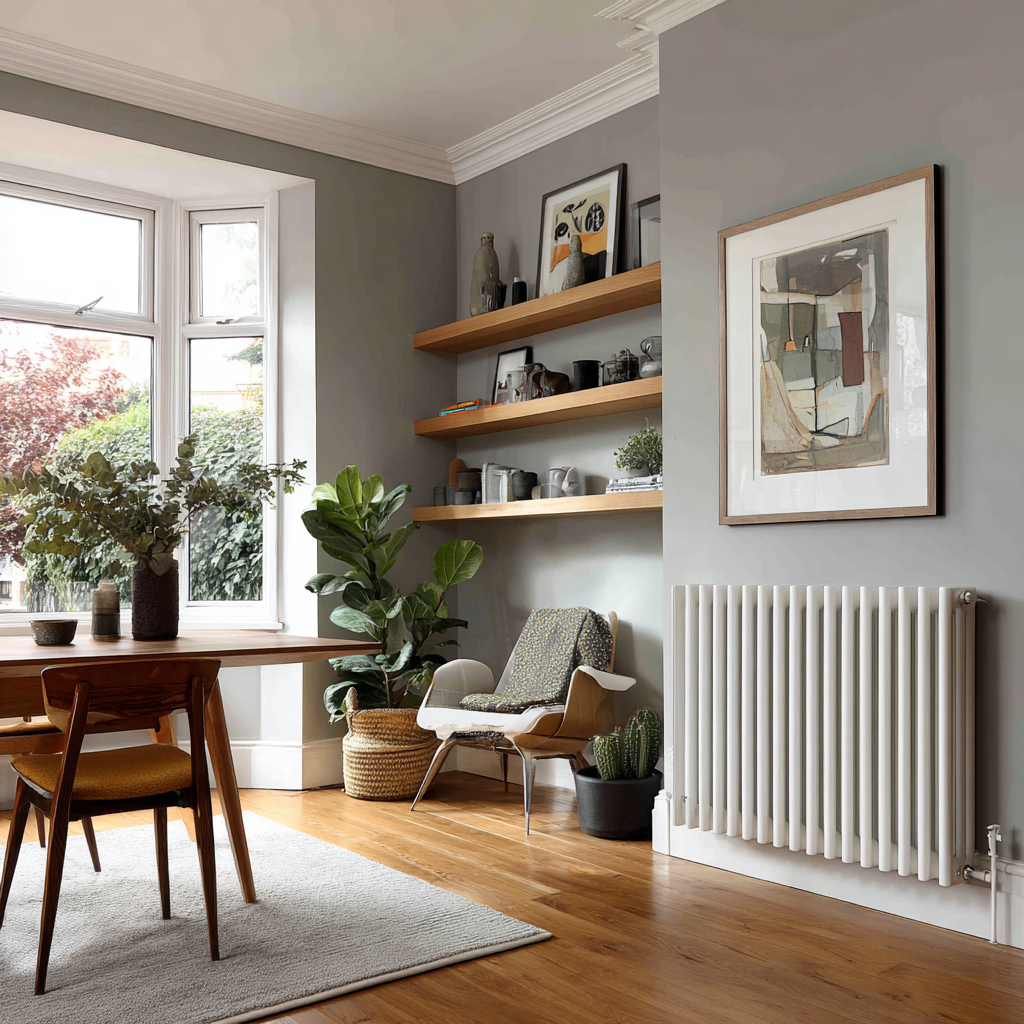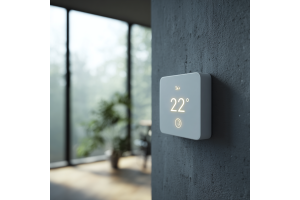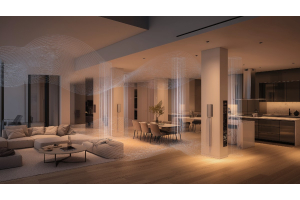
When you’re dealing with compact rooms, limited square feet, or awkward layouts, making the most of vertical space and walls is essential. After all: every wall is an opportunity — for storage, display, utility, or style. Below are ten clever, practical strategies to make your small home feel larger, more efficient, and more beautiful — with tips you can implement room by room.
1. Go Vertical with Floor-to-Ceiling Shelving
Instead of a short shelf or cabinet, build or install shelving that climbs the full height of the room. You gain maximum storage while keeping your floor area clear.
-
Use adjustable shelves so you can vary spacing as your needs change (books, baskets, decorative items).
-
Incorporate closed cabinetry near the base (to hide clutter) and open shelving higher up (to lighten the visual weight).
-
Paint or finish the shelves in a colour that blends with your wall to reduce visual interruption.
Room tip: In a small living room, flank a television with built-in shelves up to the ceiling — the vertical lines draw the eye upward and give more room for books, décor, or concealed media gear.
2. Use Floating Furniture & Wall-Mounted Pieces
Removing legs from furniture gives the illusion of open floor space and creates room underneath for smaller items (like baskets, pet beds, or feet).
-
Floating cabinets, desks, and vanities are ideal.
-
In bathrooms, a floating sink or vanity leaves floor space for laundry baskets or storage bins.
-
In kitchens, wall-hung console tables or fold-down breakfast bars free up walking zones.
Bonus: Mount lighting (e.g. sconces) instead of using floor lamps to free up corners.
3. Turn Corners & Edges into “Hidden” Zones
Corners and edges often go unused. Be creative:
-
Corner shelves: triangular or wedge-shaped units that fit snugly.
-
Built-in nooks: use recesses (e.g. between studs) for shallow niches.
-
Over-door shelves or cabinets: use the top zone of a door frame for extra storage.
-
Wall-to-wall corner cabinets: wrap storage around adjoining walls for continuity.
4. Multi-Functional Wall Systems (Pegboards, Slatwalls, Rails)
These offer flexible, reconfigurable storage that adapts to changing needs.
-
A pegboard wall in your workspace or kitchen can hold tools, utensils, or small baskets.
-
Slatwalls (horizontal tracks with hooks and fittings) offer clean modularity for coats, hats, planters, or décor.
-
Use rails with S-hooks or magnetic strips for pots, pans, kitchen tools, or even office supplies.
These systems are especially powerful because you can rearrange as needed without redoing everything.
5. Use Wall Hooks, Rails & Pegs Everywhere
Hooks are simple but transformative. They allow you to “hang” items that would otherwise clutter surfaces.
-
Entryways: coat hooks, bag hooks, key racks.
-
Kitchens: rail systems for utensils, pans.
-
Bathrooms: robe hooks, towel hooks (or heated towel rails).
-
Bedrooms: hook frames for jewellery, hats, belts.
-
Use double hooks (one above the other) to maximise utility in narrow walls.
Design tip: Use uniform or coordinated hook hardware (same metal finish) for visual cohesion.
6. Floating Desks & Fold-Down Surfaces
In small homes, you don’t always need a full desk. A floating, wall-mounted drop-down desk folds up when not in use.
-
Use fold-down tables in dining corners.
-
Install a slim shelf at desk height and a fold-out leaf as needed.
-
In hallways, a wall-mounted console can double as a workspace or small bar area.
7. Slimline Radiators or Integrated Heating
Walls often get “stolen” by bulky radiators. In small homes, that can seriously eat into your wall real estate. Here’s where Geyser’s designer radiators come in:
-
Slimline vertical radiators free up horizontal wall space and make more of your wall available for shelving or art.
-
Custom-sized radiators help you fit heating into odd or narrow spaces, preserving room for storage. (Geyser offers bespoke column radiator options to suit unique dimensions.) Geyser Radiadores e Toalheiros
-
Radiators with flat profiles or those that double as towel rails (in bathrooms) serve a dual purpose — heating and storage/display.
By integrating your heating solution with the wall, you avoid losing precious wall real estate to bulky units.
8. Wall-Mounted Storage + Decorative Displays
Don’t make storage purely utilitarian — combine it with display:
-
Use picture ledges: shallow shelves where you can layer artwork, frames, small plants.
-
Floating cube modules: mix open cubes (for display) and closed cubes (for hidden storage).
-
Use recessed wall niches (especially in plaster/drywall) as built-ins for decor or storage.
This approach avoids “cold” bulky storage and keeps your walls visually active.
9. Recessed Wall Storage (In-Wall Cabinets)
Where possible, recess your storage into the wall, rather than adding on.
-
In kitchens: recess cabinets for spice racks or pull-out pantries.
-
In bathrooms: build in medicine cabinets with mirrored fronts.
-
In hallways: shallow recessed cupboards for coats, shoes, or cleaning tools.
-
In bedrooms: built-in wardrobes that don’t project forward, using closets that are flush with the wall.
While this sometimes requires more structural work, it yields a seamless look with zero intrusion into room depth.
10. Keep Walls Light & Visual Flow Unbroken
Finally, avoid cluttering walls to the point that they feel heavy or chaotic. A few principles:
-
Use consistent finishes (same paint or tone) so shelving or cabinetry doesn’t “pop out” too much.
-
Mirror large surfaces: full-height mirrors help reflect light and visually open rooms.
-
Leave “breathing space” — it’s okay to leave parts of a wall bare so your eye rests.
-
Use recessed lighting (between shelves) to highlight storage and prevent it from looking too deep or dark.
Room-by-Room Suggestions & Quick Wins
| Room | Quick Wall-space Idea | Tip |
|---|---|---|
| Living / Lounge | Install a narrow, vertical radiator instead of a wide horizontal one | Use adjacent slim shelves above or below |
| Kitchen | Use pot-rail systems above stovetop, magnetic knife strips | Add a fold-up wall table for occasional prep surface |
| Bathroom | Heated towel rails that double as radiator + ladder | Recess medicine cabinets with mirrored doors |
| Bedroom | Floating bedside shelves and wall-mounted lights | Hooks behind the door for robes, bags |
| Hallway / Entry | A vertical radiator + wall hooks + slim cabinet | Use overhead shelves above door frames |
Getting Started: A Practical Workflow
-
Audit your walls. Walk each room, note every wall segment (height, width, obstructions).
-
Decide priorities: storage vs display vs function (heating, lighting).
-
Sketch options. For each wall, sketch shelving, rails, radiator placement + clearances.
-
Choose multipurpose pieces. Wall features that combine use (e.g. radiator + rail, shelf + peg, display + closed box).
-
Install smartly. Start with fixed elements (radiators, built-ins), then layer modular systems (pegboards, floating shelves).
-
Iterate. Use reconfigurable systems so you can adjust later as needs evolve.
Conclusion
Maximising wall space is about more than just squeezing in extra storage — it’s about making a small home feel bigger, brighter, and more functional. From vertical shelving and fold-down furniture to slimline radiators and recessed storage, every wall can work harder without overwhelming the room. By combining practical solutions with stylish choices, you can create a home that feels open, uncluttered, and tailored to your lifestyle. And with Geyser’s range of slim, vertical, and designer radiators, you don’t have to sacrifice comfort or heating efficiency to achieve it — your walls can look good, work hard, and keep your home warm all at once.







